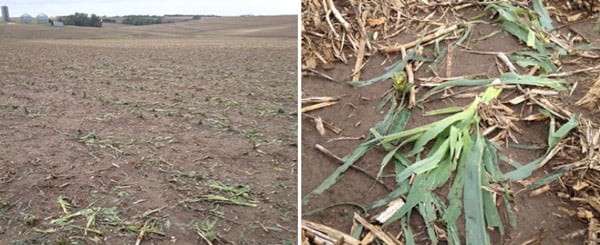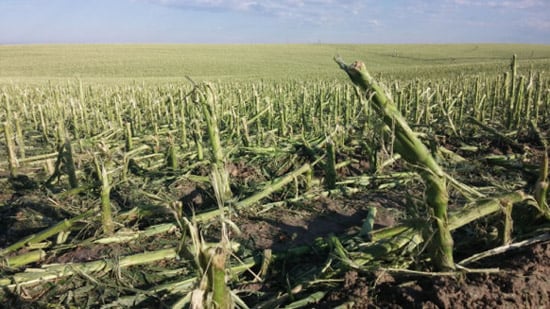Last year the U.S. saw several crop-damaging hailstorms. Two of these-both in Nebraska-were particularly significant.
On June 3, hail up to 4.25 inches in diameter fell throughout central and eastern Nebraska, resulting in significant damage to young corn and soybean crops. An analysis of this event in the new AIR Crop Hail Model for the U.S. produced a loss for the crop insurance industry in Nebraska in the range of USD 4 million to USD 11 million.
The second major event occurred on July 9, with multiple hailstorms dropping hail as large as 2.75 inches in diameter across large areas of corn and soybean crops in central Nebraska. Analysis of the July 9 event produced a modeled loss to crop insurers in the range of USD 35 million to USD 65 million.
The major driver of the widely different impacts of these two events was the timing of the storms with respect to the growth stages of the affected crops.
The June 3 event occurred when corn in Nebraska was between the V2 and V7 developmental stages, and soybeans were between the VE and V2 stages. In general, it is possible for corn damaged at this early stage of growth to regrow and produce close-to-expected yield because the plant growing point remains underground until the V6 growth stage and is therefore largely protected.
In contrast, the July 9 event occurred when the corn and soybeans in Nebraska were at a critical stage of development. Most of the corn crop is in the tasseling-silking stage at this time of year, and soybeans are in the blooming stage. Crops damaged by hail at this stage cannot regrow as the growing point of the plant is now above ground and would suffer severe damage. Replanting at this late stage of the season is also not possible.

V4 (4-leaf) corn in Dodge County, Nebraska damaged by hail on June 3 (Source: University of Nebraska-Lincoln CropWatch. Photos by Nathan Mueller)

Tasseling/silking corn damaged by hail on July 9 in Buffalo County, Nebraska (Source: Lory Potter)
The combined estimated losses to the crop insurance industry in Nebraska for these two events range from USD 39 million to USD 76 million. Elsewhere in the U.S., there were several smaller hailstorms through the season that caused additional crop damage. One example was a September 9 hailstorm that damaged predominantly fruit and vegetable crops in central Minnesota. However, the impact from these lesser events were highly localized and, individually, did not result in large crop insurance industry losses. That said, the aggregation of smaller losses across a growing season can be significant.
To learn more about managing crop hail risk, please click here.



